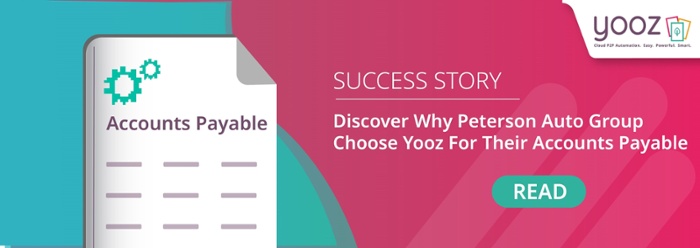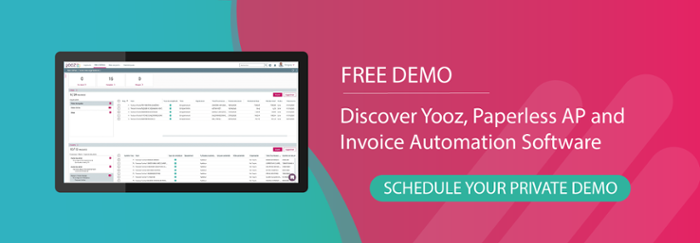The Accounts Payable (AP) process is a vital part of the financial management of a business, serving to track and manage the company's outstanding invoices and any payments owed to vendors or suppliers. Effective management of the AP process helps to ensure a positive cash flow, and optimizing the workflow with automated invoice processing can helps businesses reduce costs and enhance overall financial performance. And effective management begins right at the start.
When receiving vendor invoices it is vital to ensure that all the information - especially any costs - are outlined as agreed on the Purchase Order (PO). Before advancements in technology, such as AP automation, matching the information would have been done manually by an accountant or an organization's accounting department. Fortunately, today software helps to streamline the process and eliminate the need for manual labor, helping to ensure accuracy right away.
Whether you own a small company or a large corporation, having a reliable PO matching process offers numerous benefits. But what exactly are these? And how can you implement a proven PO matching system?
In this blog post, we share a guide to PO matching and answer some of our most frequently asked questions to help you determine whether automating the process could benefit your organization in the near or far future.
What is PO Matching?
Simply put, PO matching is the process of comparing costs on a purchase order with the costs outlined on invoices submitted by vendors to confirm they match. For example, when you agree to pay for services or products a vendor or supplier provides, your AP department will draw up a PO. In return for their services, vendors submit invoices outlining how much they require you to pay. Upon receiving the invoice, your AP department will then match all information on both the PO and invoice, ensuring that it aligns and there are no discrepancies. If an error or exception is found, the invoice can be flagged immediately for attention.
Are There Different Types of PO Matching?
There are three major types of PO matching: 2-way matching, 3-way matching, and 4-way matching. Which one that you select to integrate into your AP process will depend both on your business operations and the level of security and accuracy which you hope to implement. Let's compare the three:
- 2-way matching. In 2-way matching, information is compared between the vendor invoice and the PO.
- 3-way matching. This type compares information against 3 sources: the PO, vendor invoice, and the sales or delivery receipt. Because the information is triple checked, the likelihood of fraud or error is greatly reduced.
- 4-way matching. Similar to the 3-way matching process, 4-way matching compares all information on a PO, vendor invoice, and the sales or delivery receipt. However, to add an extra level of security before an organization settles an invoice, the fourth matching step includes a confirmation that the correct quantity of the product or service has been delivered and accepted. For example, an organization using a 4-way approach will confirm that they have received the correct number of products before payments are sent to the vendor.
How Do You Implement PO Matching?
Within any organization, the AP department is responsible for PO matching. When the organization places an order with an external supplier or vendor, they create a PO outlining what they are ordering, how much they are paying the supplier based on the quantities or services requested, and when they require the services or products to arrive.
In response to receiving a PO, the supplier provides the services or goods and then submits an invoice for the organization to settle. Before this can occur (settling the invoice), the AP team must confirm that all information on the supplier’s invoice matches the PO. As long as everything matches, the vendor receives their payment.
If the organization implements 3-way matching, the process is similar to 2-way matching. However, as detailed above, the final step is confirming that the information on the sales receipt also aligns with the figures on the PO and invoice.
Likewise, if implementing 4-way matching, the AP department will only settle an invoice once they have confirmation that all information on the PO, invoice, and sales receipt matches, and they can guarantee upon delivery that the products or services have been provided.
The catch? In a manual based process, there is a direct correlation between the number of invoices received and the amount of time required to complete the matching process. More invoices, more time required. More matching that needs done... You get the idea.
What is Automated PO Matching?
Rather than requiring the AP department to manually create, input, and cross-reference important data, automated PO matching uses software to do this. The software captures information on PDF POs, invoices, receipts, or scanned documents, and instantly matches all information.
Why Does Automating PO Matching Help Out?
From reducing the risk of fraud to improving business operations, here are several ways that automating the PO matching process can benefit any organization:
- Improving accuracy. Although AP departments are extremely thorough and pay great attention to detail, there’s always a risk of human error when manually processing financial documents. While mostly unintentional, these errors can significantly impact turnover, especially as research shows that invoice blunders can cost businesses approximately $53.50 per document to rectify.
- Increased efficiency. In addition to reducing the risk of errors, automating PO matching increases efficiency. For any size organization there is a reduced need for manual approval, meaning vendor invoices are settled much quicker than if using a manual AP process.
- Enhanced accuracy. Whether an organization employs 2-way, 3-way, or 4-way matching, automating PO matching quickly and automatically validates all data entered into the software. If there are any errors, these are automatically flagged.
- Reduces spending. While reducing the risk of PO matching errors can save money, automating the process minimizes the need for manual labor. Although automation can’t entirely replace humans, taking advantage of PO automation could limit business spending by as much as thousands of dollars each month.
- Improves employee retention and satisfaction. Another benefit of automating PO matching is that offers employees and organizations more time for additional training in using automation software and other business aspects. Not only does this upskill employees, but it contributes to greater employee retention and satisfaction.
Though not an exhaustive list, these are just a few ways that automating PO matching can benefit any organization.
The Automated Accounts Payable Matching Process
Like manual AP matching processes, automatic PO matching compares selected information shared within POs, invoices, and receipts. When using the software, data such as units required and costs of units are automatically captured in the system upon being uploaded either via scanning paper documents or uploading PDF documents. From there, data entries are electronically checked and stored. Invoices are verified, and vendors receive their settlements on the condition that all data matches. Some automation platforms (such as Yooz) offer the ability to extend automation all the way through the payment process.
How Does PO Matching Help Avoid Fraud and Error?
In 2022, the Federal Trade Commission reported that almost $8.8 billion was lost to fraud. Affecting consumers and businesses alike, more than a third of this was due to investment scams. Meanwhile, vendor, supplier, and procurement fraud is among the most serious types of fraud impacting businesses.
As touched on above, PO matching enhances accuracy and practically eliminates the risk of errors by flagging any data entries that do not match POs, invoices, and receipts. In addition to preventing organizations from making mistakes, such as underpaying or overpaying vendors, this process helps highlight any potential fraud as well.
Contact Us to Find Out More
Whether you’re looking to reduce manual labor, avoid fraud, or increase organizational efficiencies, there are many benefits associated with PO matching. Although we hope this guide has answered many of your questions, if you’d like to find out more about the process, contact us today. Our 3-way matching process is ready and waiting to support your organization.









